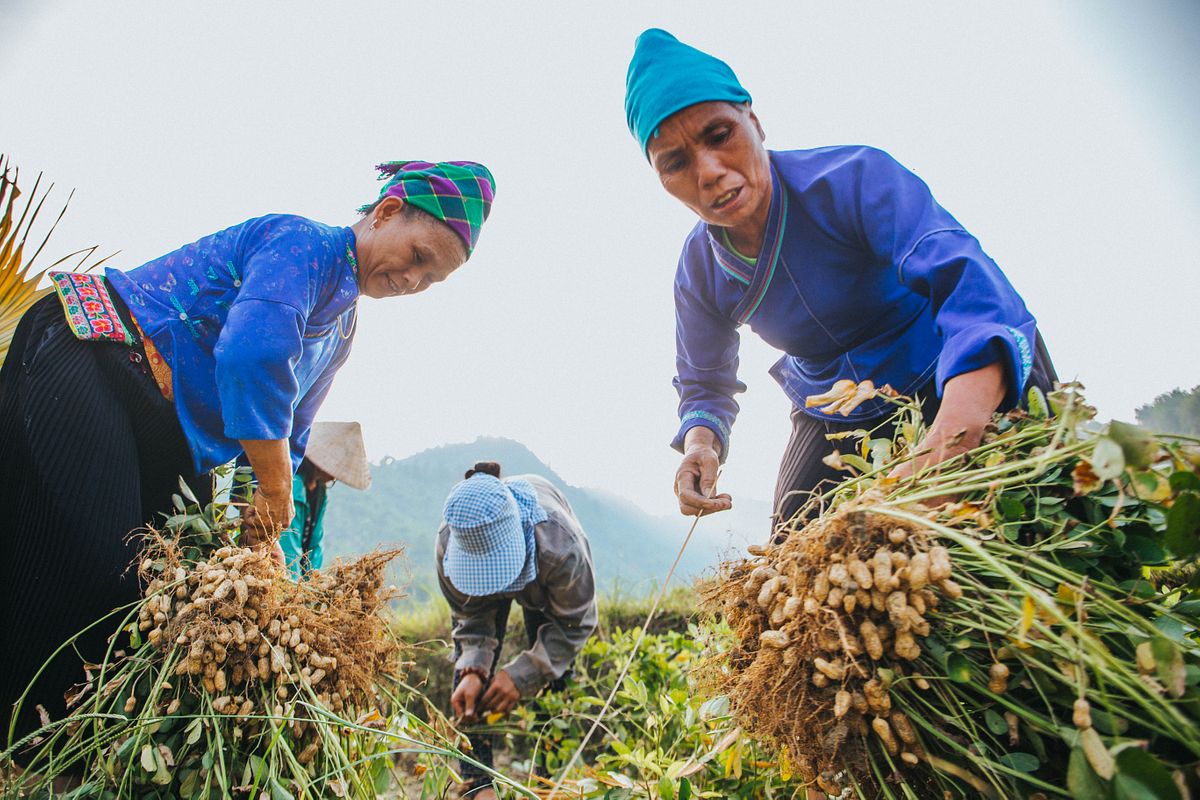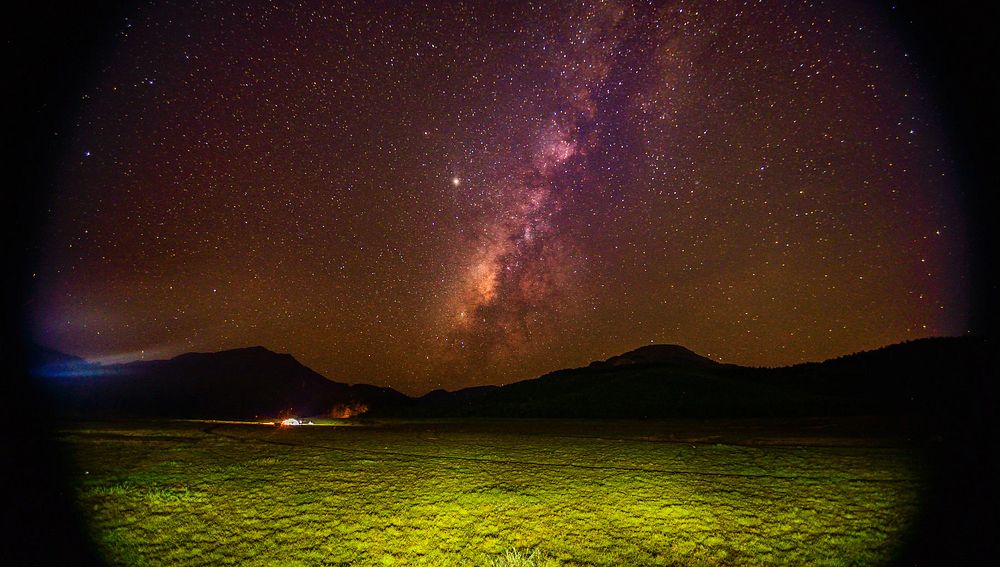Located in the heart of a valley surrounded by verdant stretches of forest, the little hamlet of Khun retains much of its pristine natural charms. From the enigmatic beauty of the local Bó Mỳ Cave to babbling creeks, Khun is a must-visit destination during northern Vietnam’s sweltering summer season.
Khun is located in Bằng Lang Commune, 8 kilometers away from central Quang Bình District and 95 kilometers from Hà Giang City.
Compared to Hà Giang’s better-known localities, Khun has neither the majestic karst cliffs of Đồng Văn in the east nor Hoàng Su Phì’s terrace fields in the west. Khun, however, doesn’t host throngs of tourists, giving local areas a laid-back, easy demeanor that won’t overwhelm first-time travelers.
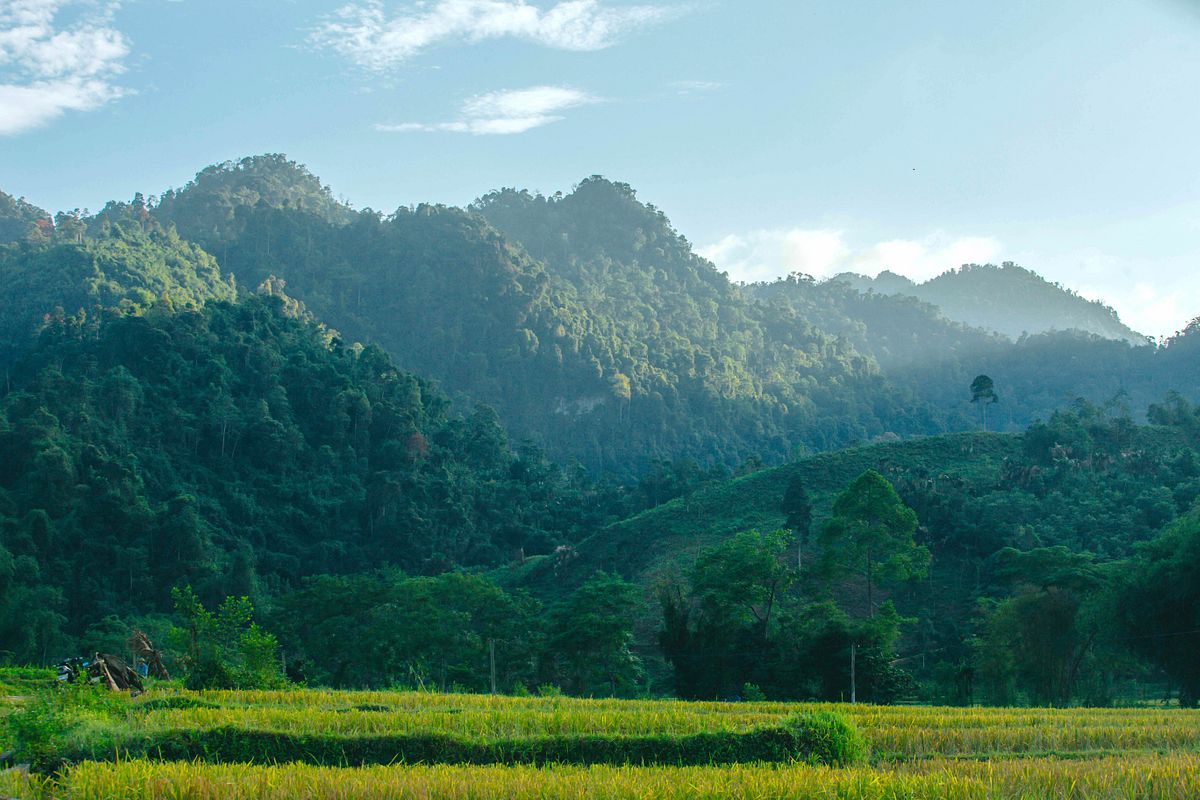
Khun is a sleepy hamlet at the foot of a mountain amidst the multitudes of green shades from the vegetation and endless paddy fields.
The humble hamlet, at its core, might seem like any village in the countryside, with stretches of rice fields, bamboo thickets, and stilt houses dotting the vista. Khun is gentle, tranquil, and calming like a maiden enjoying a perpetual slumber under the jungle canopy. This rustic simplicity tugs on the heartstrings of nature lovers like me. Arriving at Khun for just a moment, I found myself losing my grasp on the passage of time, dipping in and out of reality and the call to my past with childhood memories, their vivid colors and sounds.
Experiencing a day in Khun
Much of my time at Khun Hamlet was spent roaming about. I took long strolls on narrow, meandering paths along the edge of the fields, in between luxuriant bamboo bushes, and across crystal-clear brooks. Many stretches are still dirt paths. From afar, the routes into the hamlet seemed to be tiny threads tangled in the thick of the jungle. I made a conscious choice to walk as leisurely as possible to keep pace with the sleepy ambiance here, only stopping to enjoy a melody of hát then or mellow tính tẩu tune coming from uncertain corners of the village.
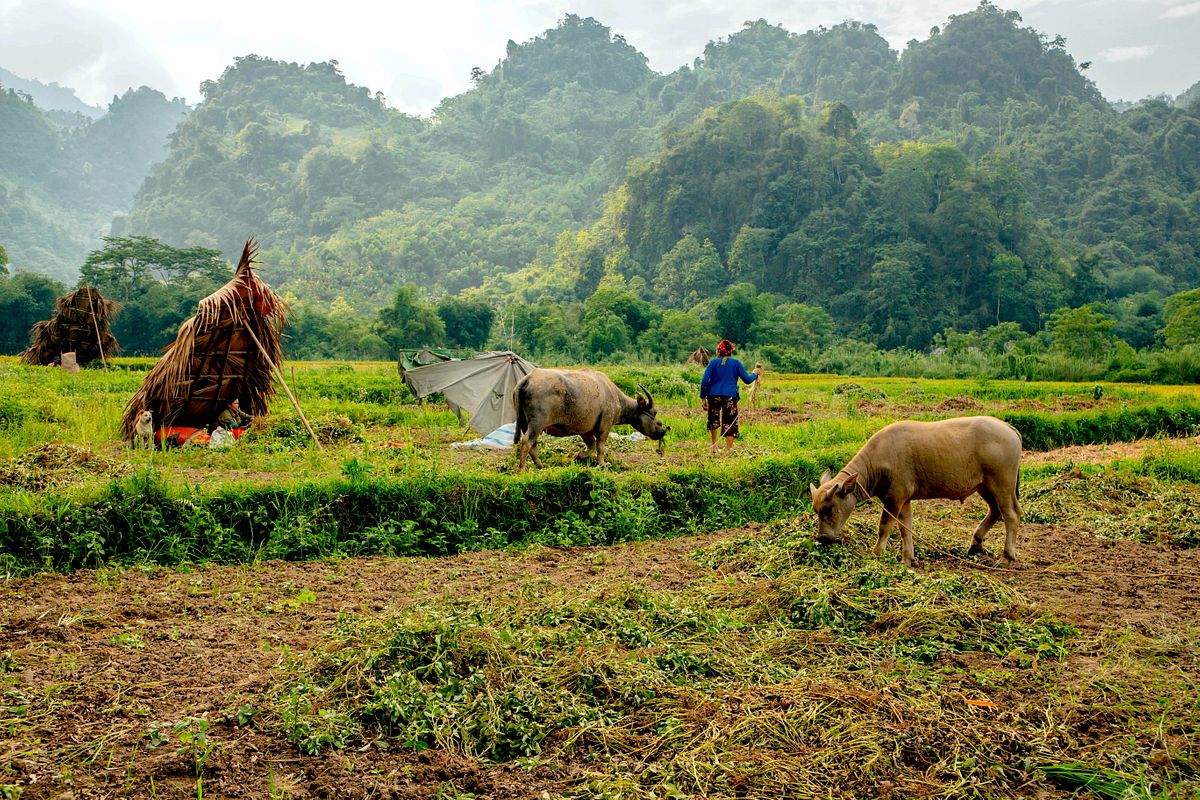
Palm fronds help to protect local farmers from the sun.

After finishing with the rice harvest, local residents move on to collecting peanuts.

Lychee is also a common crop in Khun.
Standing in the field amid the aroma of fresh hay, I watched puffs of cloud languidly inch past the sky before disintegrating into nothing. In a hurry, the sun sent the last few rays past the curtain of dusk before mellowing down behind the jungle. A lugubrious evening beckoned. Summer nights in Khun are often the time for sporadic bouts of rain. The deluge of water rushed onto the ground, forcefully shaking trees and flimsy structures. Throngs of amphibians began their loud opera sessions. The watery symphony brought me back to days spent in my hometown decades ago. I miss my hometown.
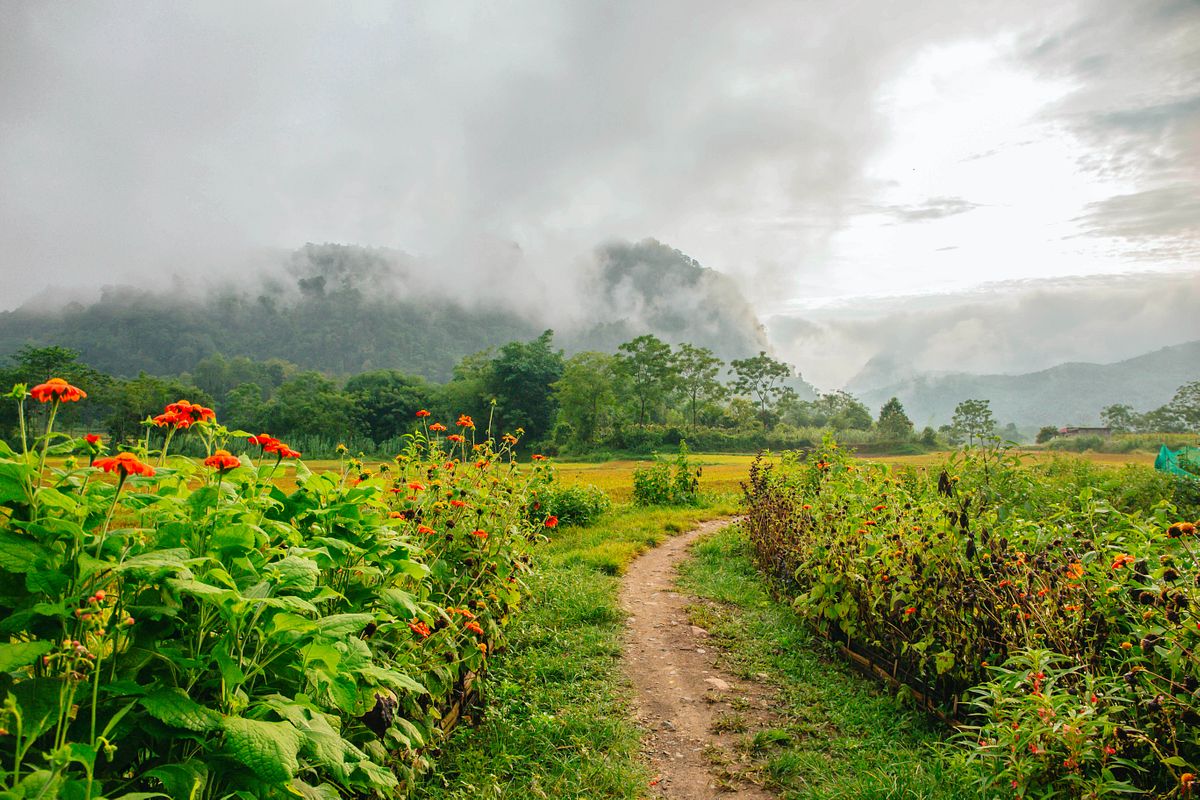
Pathways in Khun are often not paved.
When the morning came, Khun jolted awake. Once again, I phased out of slumber thanks to a cacophony of nature noises, the wilderness’ built-in alarm clock: the cock-a-doodle-doos of local roosters, the quacks of happy ducks, and the ballad of songbirds. I completely forgot to crane my arm to turn off my digital alarm clock like I always do while in the city. Early sun rays snuck in right beside my bed, and just outside the window, heavy clusters of ripe lychees enticed me to get up. Here, just existing and breathing air was enough to fill my being with a sense of palpable contentment.
Khun is exceptionally green. The tiny hamlet seemed lost in the middle of a valley in between swaths of heritage forest. Greenness cornered the village from four sides. The entire hamlet spans 1,513 hectares, but 961 hectares are protective forest. The forest safeguards the land. The forest has long kept the livelihood of the people safe for generations. It helps maintain the clean atmosphere. Looking outside from the village, it’s not difficult to spot multitudes of palm-covered hills. The fans of palm fronds act like umbrellas for farmers on the field and for buffalo herders. Palms also provide materials for roofing. The people of Khun grow up under the protective shade of palm trees.
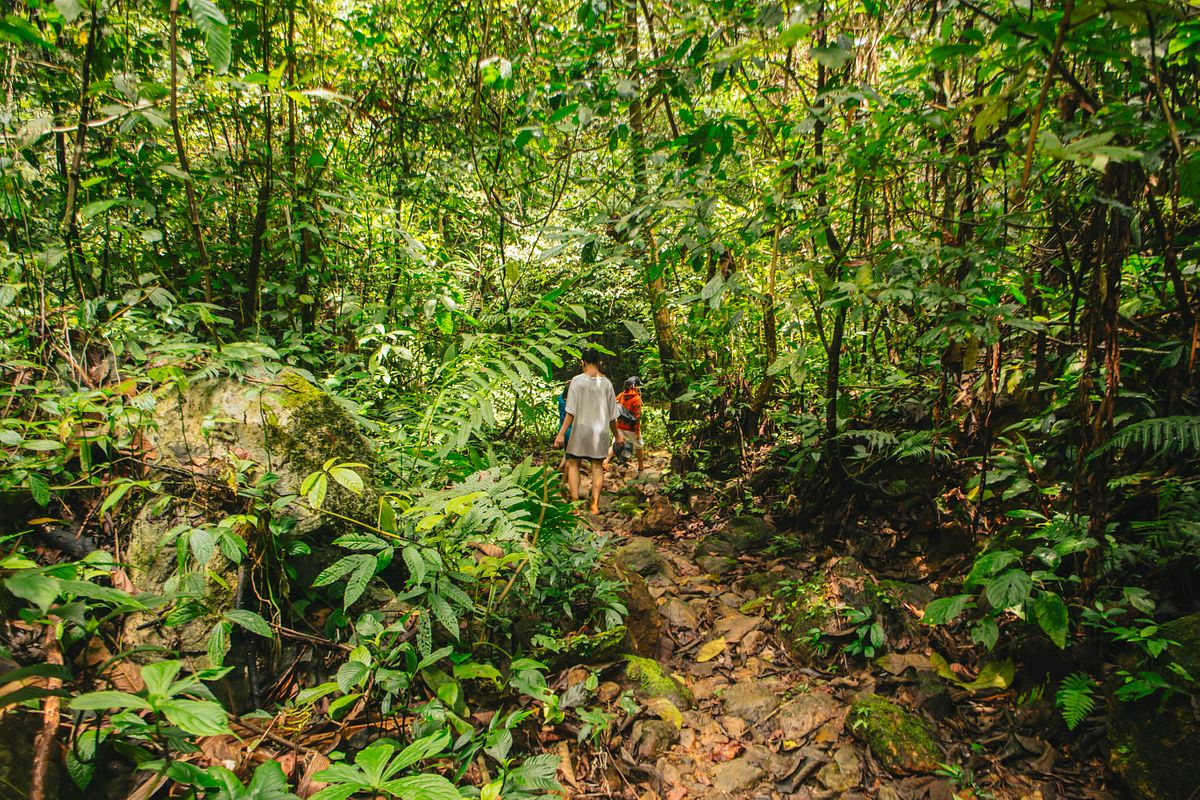
Much of my time in Khun was spent on walks through nature.
Exploring the Bó Mỳ Cave
The forest welcomed me into its embrace when I visited Khun. At times, I felt like an innocent doe eagerly gallivanting around the forest. Following the footsteps of local Khun residents, the forest path led me to a natural masterpiece that Mother Earth gifted the hamlet — Bó Mỳ Cave. The cavern spans 2 kilometers, with the highest stretch reaching 50 meters tall and the widest 20 meters across.
In the cave, an underground lake molds itself along the contours of the rock. This acts as a reservoir for many hamlets of the local commune. The water is crystal-clear and refreshing. Some parts of the lake can be quite deep, over 2 meters, so people installed wooden rafts for ease of crossing. This waterbody is also home to many a local delicacy, including cá dầm xanh, a type of regional carp. Because of this region, the cave is sometimes called the Dầm Xanh Cave.
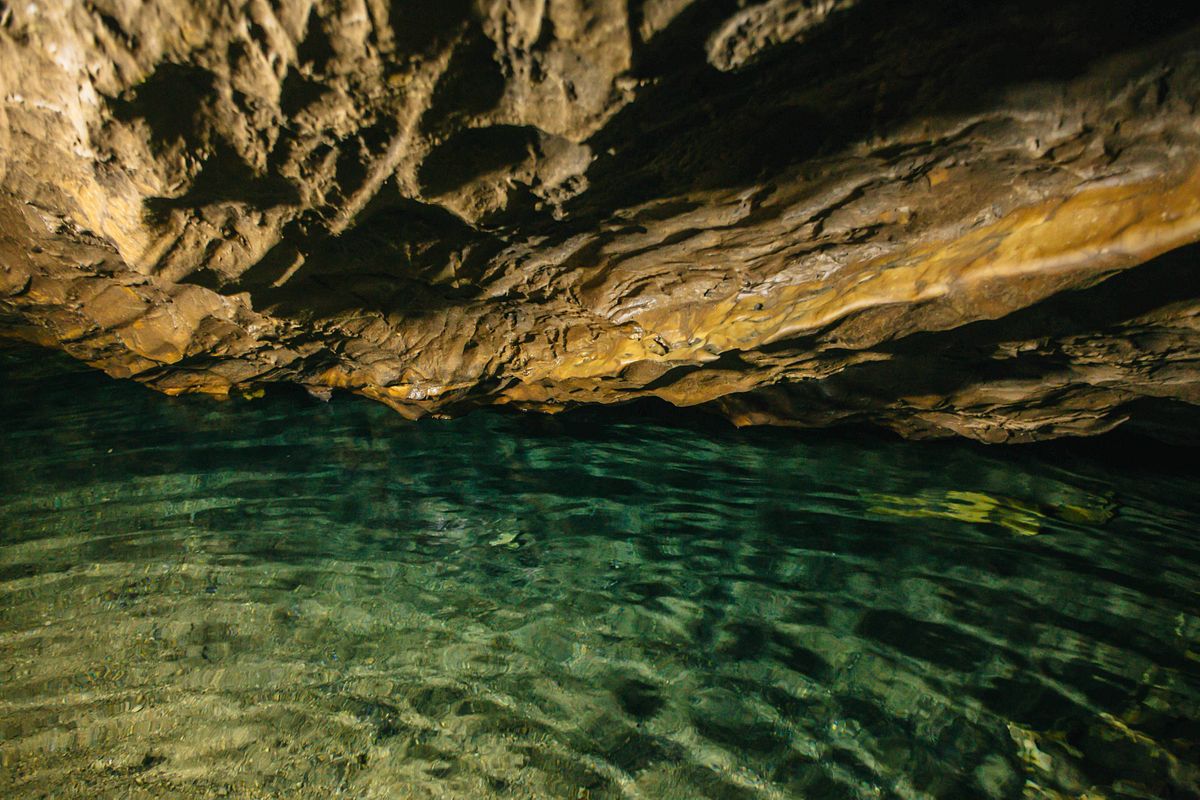
Bó Mỳ Cave acts like a reservoir for many local hamlets.
Setting foot inside the cave felt like entering an alternate dimension. It was cool to the touch, as the inner temperature is almost always 5°C lower than outside. Just looking around, one can’t help being in awe of the nimble hands of Mother Nature, being able to create such a breathtaking sight.
The heart of the cavern featured numerous stalactites in whimsical shapes and forms, fashioned by the movements of wind and water. One might look like a bridge, another resembles a castle, a hand, or even a weaving silk sash hung across the wall. After hundreds or even thousands of years, mineral-rich water droplets fall from the ceiling to crystallize into exquisite stalagmites protruding from the ground. The cave formations rest in silence every day away from prying eyes, but when there are visitors, like me, they come alive with every brush of my flashlight, showcasing a fantastical elegance as if the setting of a magical tale.
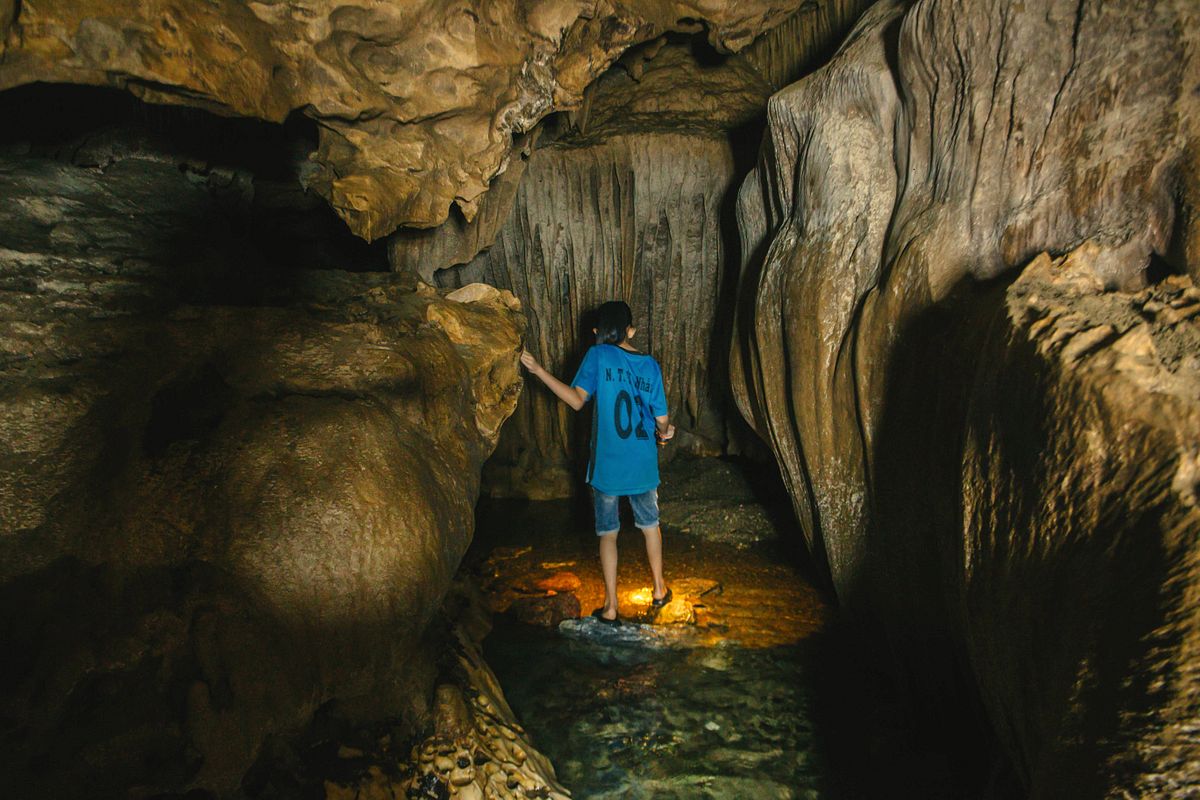
There’s no light inside the cave, so explorers should remember to bring along light sources.
After my adventure inside the cave, I let my legs soak inside the outside stream’s chilly water. Perhaps sensing my fatigue, a school of fish excitedly started grazing my feet like nature’s own version of a pedicure. The shallow water outside the cave entrance is so translucent one can clearly spot the pebbles below. These gentle creeks come from the surrounding mountains, flowing in between rock formations to reach the field, nourishing rice fields and peanut plantations, and drenching local childhoods in their cooling water.
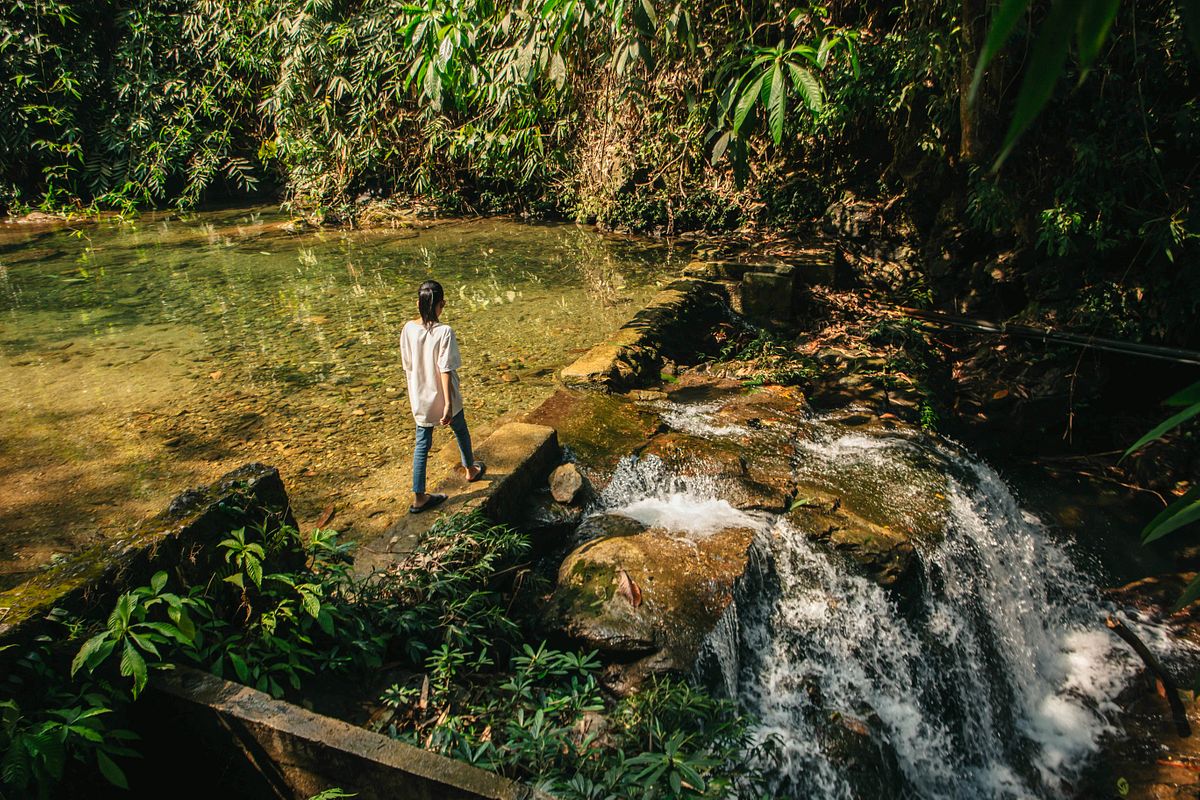


The creeks provide local children with a cooling source of freshwater, where they spend most of their summer days frolicking.
The tastes of the valley
Life in the heart of the mountains is unsurprisingly very peaceful. There are only 178 households in Khun, comprising four main ethnic groups — Tày, Dao, Nùng, and La Chí. Khun residents have retained the customs and traditions of their cultures. Along the base of the mountains, Tày people built stilt houses from local materials, especially palm fronds as roofing. Families gather beneath these structures every meal.
Here, I was treated to a diverse range of local dishes like colorful sticky rice, gỏi cá, and pickled meat, all prepared by my host. Right by the wooden walls, weavers are hard at work creating bamboo baskets and brocade textile. Every year, the Nùng community holds ceremonial offering events to express their gratitude to nature, the Dao community undertakes coming-of-age rituals for adolescent boys, while Lá Chí families use rice as a main offering for their own customs, and more.

A banquet platter prepared by Tày cooks.
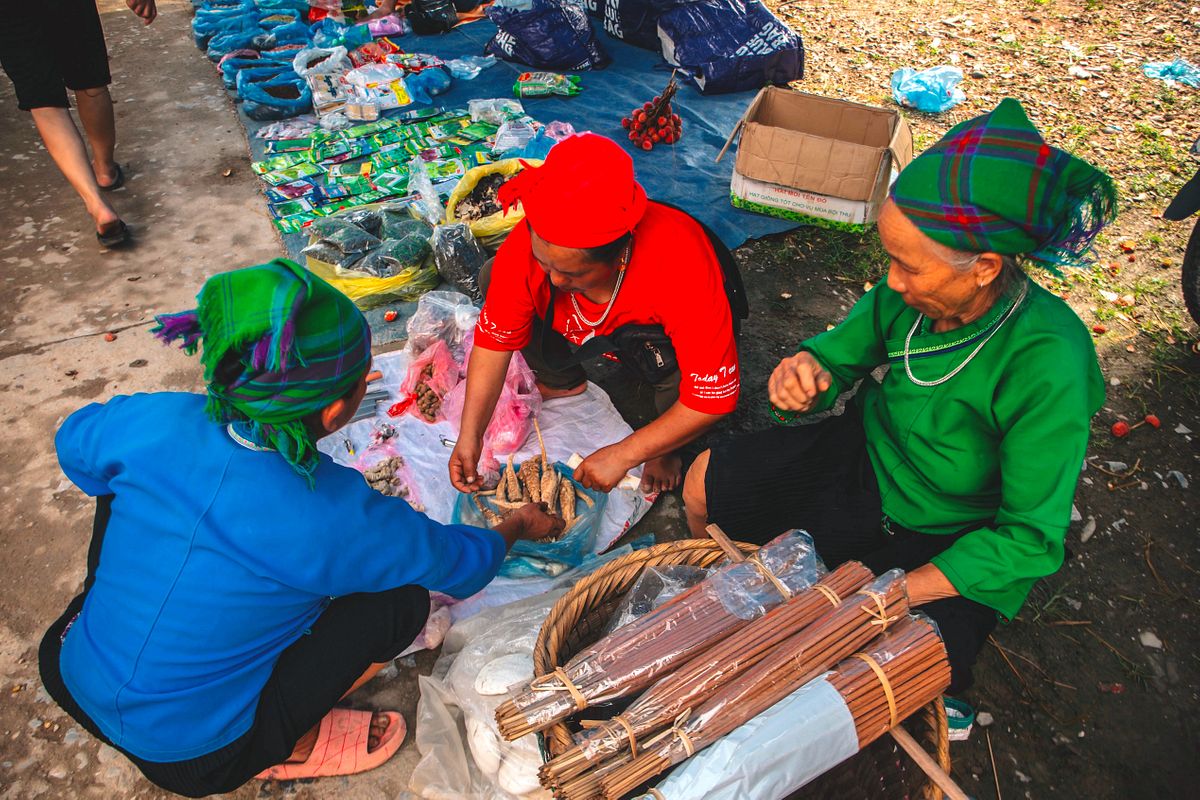
The Bằng Lang Commune market is assembled every Saturday.
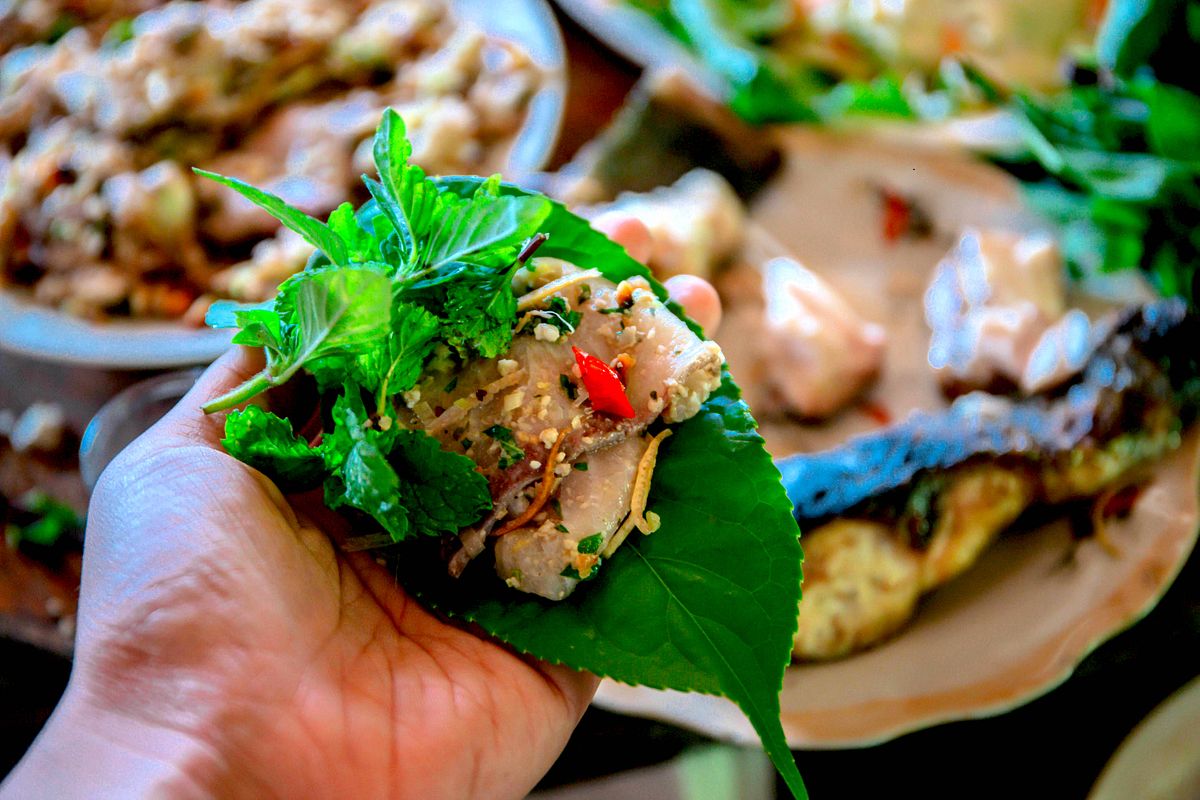
Fish salad, a local specialty.
The end of May brought along a golden hue to the valley. From above, the land is a mosaic of green, yellow, and ochre patches thanks to squares of ripening paddy. The harvest season also casts a joyful mood over the village. In the wind, the fragrance of harvest-ready grains and hay spread to every corner of the valley. Gaggles of children follow their parents to the field to play.

Gold rice paddy coats the valley during harvest season.

A traditional stilt house of the Tày people with a thatched roof.

Inside local houses, created from timber, bamboo, and palms.
Traces of tourism have just started showing up in Khun over the past few years supported by a small amount of homestay accommodations. There are no malls, amusement parks, or cafes; so much of the hamlet still retains its pastoral attributes — truly a place for nature-seekers hoping to escape the chaos of crowded cities.

